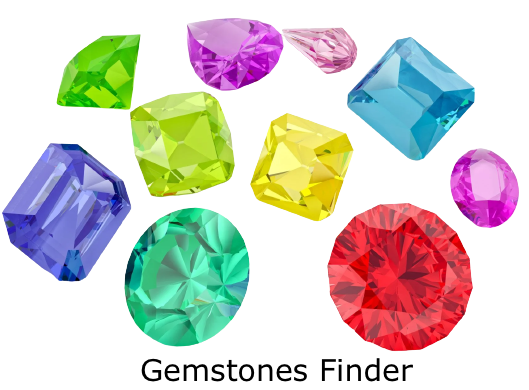Gemstones are great because they provide a lot of value, but you might wonder what types of stones are there. Here, we’ll go over the different types of ways to identify these gemstones, and some techniques for you to consider, in order to get the right idea on just what types of gemstones are out there.
Testing Gravity and Transparency
The first is a basic observation that’s done with your eyes. You can also use a triplet loupe that’s 10X, which is a daytime light equivalent. This also comes with magnification that’s strong in some cases, but not necessary.
Keep these stones around a foot away from where your eyes are, and then, over a gray or a white background, such as a gem cloth. You want to look at it facing up, and then from the side under the daylight, which is the equivalent of a fluorescent type of light.

Hue and saturation
This is one that’s the easiest to deduce, as you can separate each of these via color.
Color is a combo of tone, huge, and saturation, and you must look at each of these when observing. Don’t try to shine lights directly through stones to find the value or the color, unless it seems like it’s black, and you need to add some light directly through these stones to figure out if they’re green or dark blue.
To find the hue, you want to look for the overall color of the body. Is it more of a greenish blue, a full blue, or is there a bit of yellow in it. with over 31 different hues, you’ve got a lot to work with, in order to figure out the stone.
Then you want to look at the tone, which is either going to be light, a medium color, or dark. They may also fall somewhere in the middle, in order to describe each of the colors.
Finally, there is saturation, which is the intensity of each of the colors, ranging from a strong and vivid color, all the way to dull. This also falls in either a warm color or a cool color.

For warmer colors, you want to find the brown that’s there. if there’s less brown, it’s considered to be much better in terms of value.
There is also saturation, which is another way to decide as well. with gray stones, the coolness is another one. If you don’t feel or see a gray or brown when you look at the stone itself, it’s going to be strong in terms of saturation, with vividness being very rare.
Specific gravity and transparency
You want to make sure that the stone is translucent, transparent, and also opaque. This also determines the strength in the fire of the stone, or the dispersion of the stone. If there is fire, it’s something that might be strong, or weak in most cases.
You can also bounce this stone too in order to determine how heavy it is. Does it have a heaviness that you feel should be there? or is it light? This is something that’s good to figure out gravity. While not exact, it’s close as can be.
Finally test the luster
Finally, you want to test the luster. This involves pushing a light beam onto this, and from there, see if there is any changes in color, any stars, or any shimmers and sparkles. You can also see if it absorbs light, or if it does push light away, which will help with the overall determination of the stones and their value.


0 comments